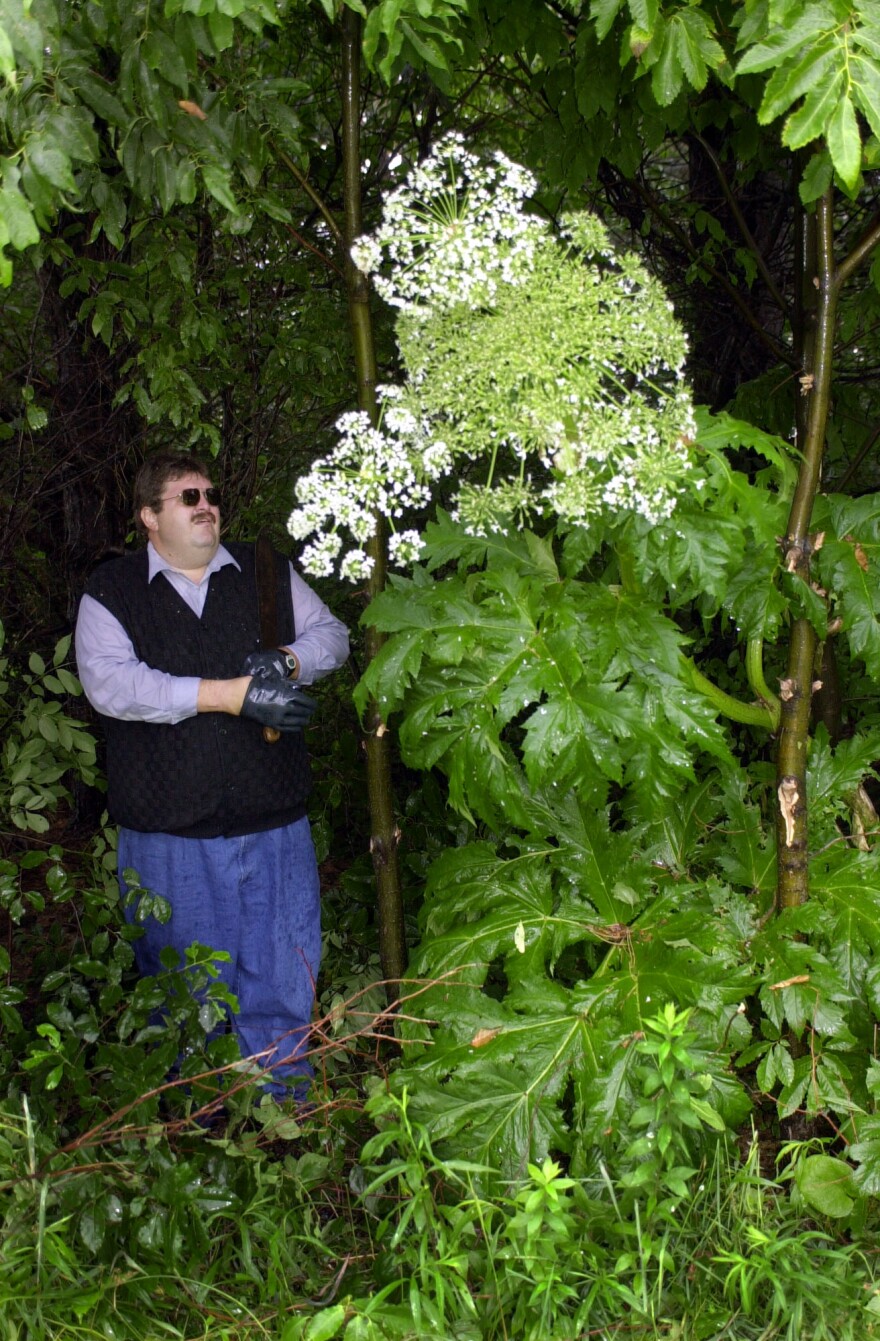A plant that causes blisters and even blindness was recently found near Battle Creek. The Calhoun County Health Department removed a GiantHogweed plant from Pennfield Township last week.
The plant can grow to be 14 feet high and has small clusters of white flowers.
What Happens If You Touch A Giant Hogweed
Peter Carrington is the edible and toxic plant specialist for Michigan State University’s botanical garden. He says the sap of the hogweed is activated by sunlight causing burns or blisters when it hits your skin.
Carrington says actually many plants in the carrot family carry this toxin in their sap. The difference is that the Giant Hogweed carries the sap on its fuzzy stems and leaves.
“So unlike a say wild parsnip, where a person could wade into a patch of them with a weed-whacker and get sap all over yourself. If you walked just pushing your way through a thicket of Giant Hogweed, you would be accessing the droplets of sap on the tips of the fur elements—the trichomes if you will—of this plant. And wherever got it on your bare skin, you would be subject to a burn if you are in direct sunlight.”
How It Spreads
Carrington says Hogweed was originally brought over from Russia as an accent plant in Victorian gardens—and people still grow it today. But Carrington says that’s not the only way it spreads.
“If that plant is growing near a stream, then thousands of these seeds ride the water and now become an entire population of these plants downstream from the location. So we have people sharing seeds inadvertently, not realizing that it’s actually illegal to possess or propagate this plant. And then of course we also have the fact that once it gets loose, the seeds travel extensively on the waterways.”
What To Do If You Touch It
If you come in contact with a Hogweed plant, health officials suggest you wash the sap off immediately and stay out of the sun for 48 hours. But Carrington says you will want to make sure you haveidentified the right plant.
How To Get Rid Of It
Carrington says if you can remove the plant as well as the top six inches of the root base, the plant can't come back. Unless, of course, it's gone to seed. You will need to wear protective covering over your skin and eyes to remove the plant.


